#source: waiting for godot
Text
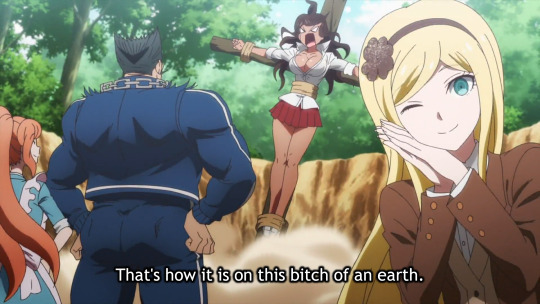
That's how it is on this bitch of an earth.
Source: Samuel Beckett (“Waiting For Godot”)
#incorrect quotes#danganronpa#dr3#sonia nevermind#akane owari#nekomaru nidai#chisa yukizome#source: samuel beckett#source: waiting for godot
95 notes
·
View notes
Text
Speedy: That passed the time.
Slowpoke: Eet would have passed een any case.
Speedy: Si, but not so speedily.
0 notes
Text
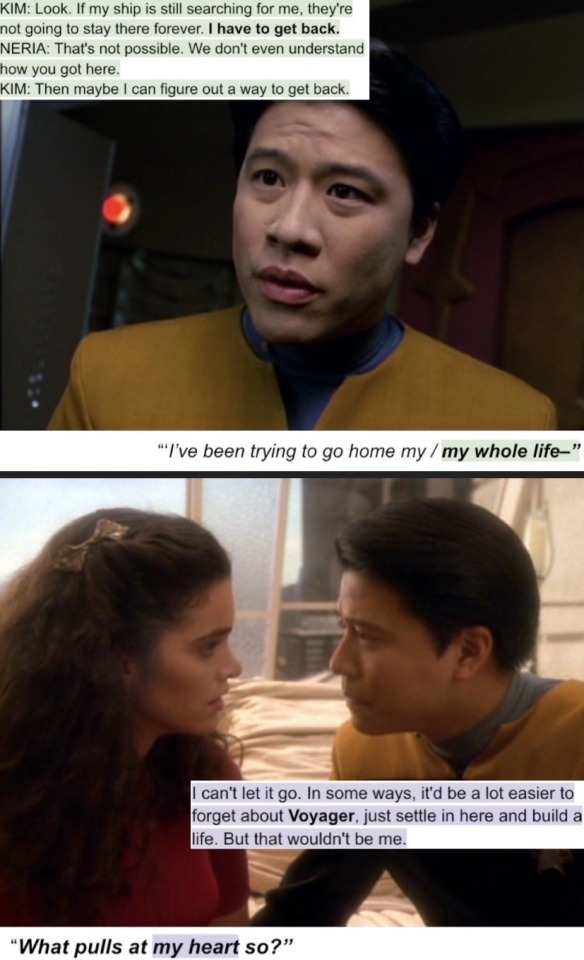

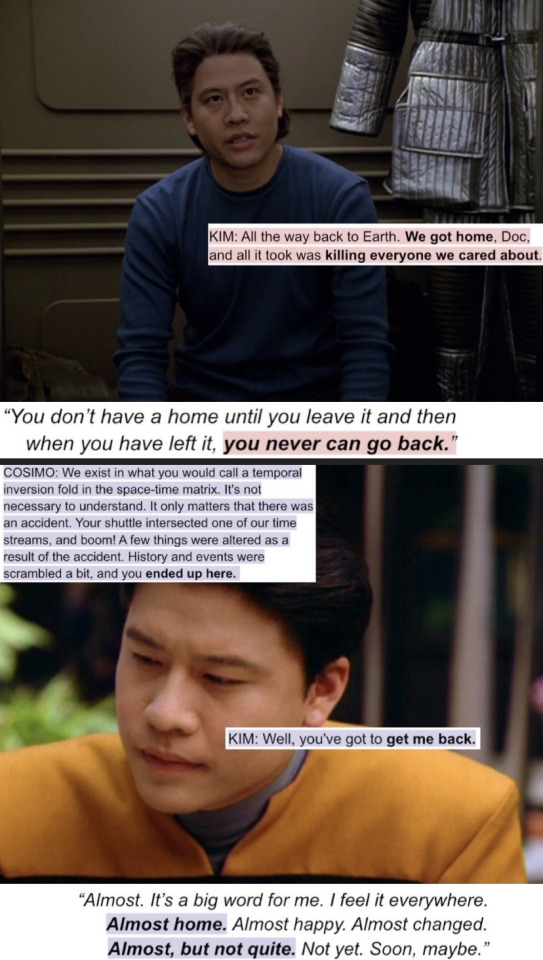



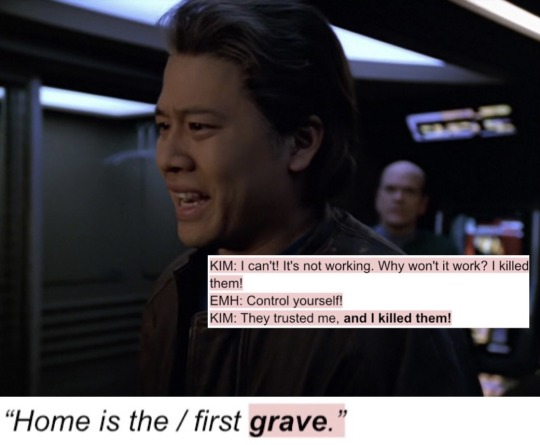
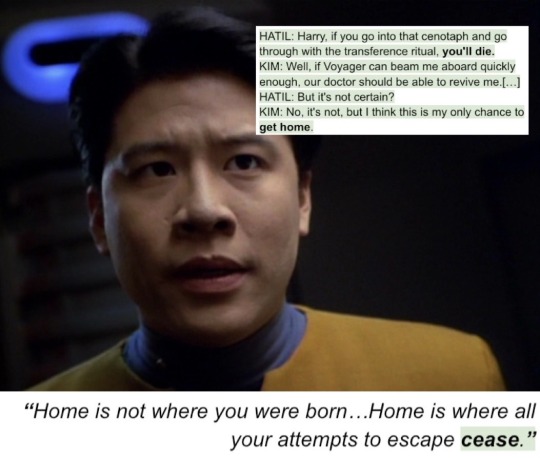
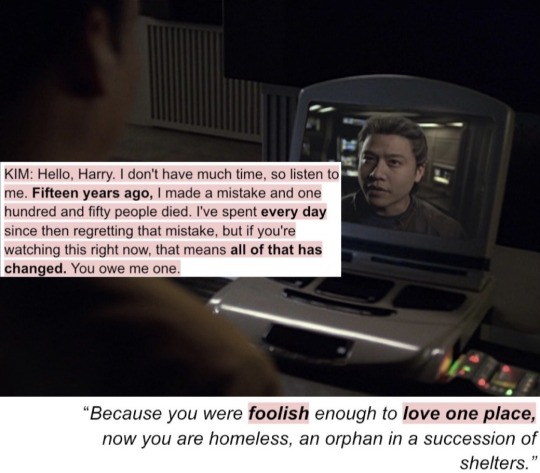
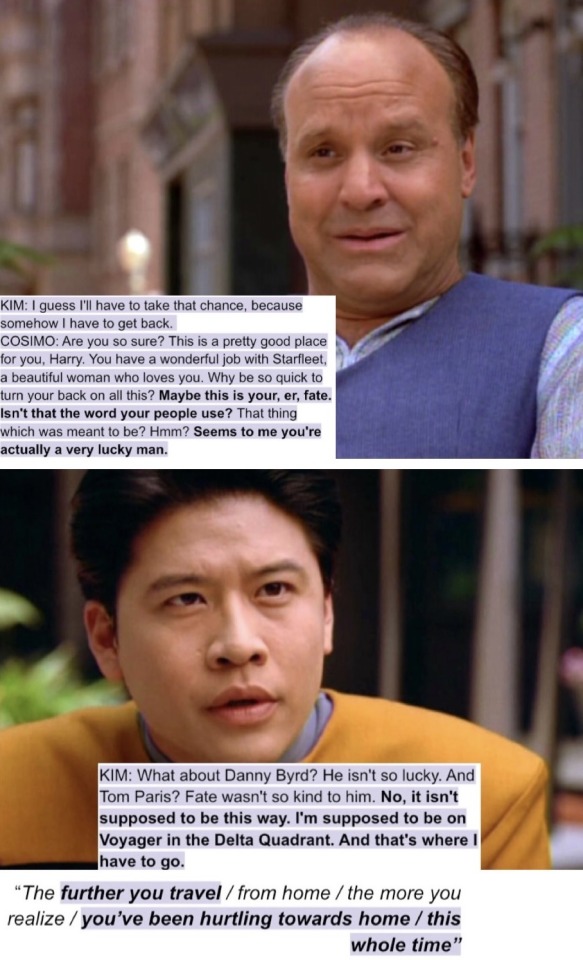
Harry Kim x Voyager and ‘Home’
quote sources + notes under the cut
Chelsea Dingman, from "Psychogeography," published in The Los Angeles Review / Longing Poem by Johann Wolfgang von Goethe / James Baldwin, Giovanni's Room / Joy Harjo, from “We Must Call a Meeting,” In Mad Love and War / James Baldwin, Giovanni’s Room / Joan Bauer - Almost Home / James Baldwin, Giovanni’s Room / Clementine von Radics, ‘Courtney Love Prays To Oregon / Samuel Beckett, Waiting for Godot / Fatimah Asghar, from “How'd Your Parents Die Again?” / Naguib Mahfouz / Louise Glück, The Triumph of Achilles / Brandon Melendez, ‘How to Write Heisenberg’s Uncertainty Principle into a Promise to Return Home
Purple highlight refers to Non-Sequitur, pink refers to Favorite Son, Yellow refers to Deadlock, green refers to Emanations and red refers to Timeless.
#voyager#star trek#harry kim#star trek voyager#web weaving#timeless#non sequitur#so. hi. can we all talk about harry’s home becoming voyager and the farther along we get in the series the closer he gets to having to leave#this home. voyager is like. his origin story hes always trying to get back….#voy#st#parallels#**#i feel so normal abt him<3 (lying im lyingggg)#im in early s5 rn so like who knows what im missing these were just the eps n scenes i thought to look into#maybe i will add or do a part two once the shows done.#anyway rory you were so right abt harry kim i Get It Now
165 notes
·
View notes
Text
A Pencil and Paper
On September 12th, 2023. Unity announced that it would be adding a "per-install" fee towards developers. [X]
There have already been many indie developers that have already spoken out against it, so I will amplify their voices here:
Inner Sloth, developers of Among Us: [X]
Aggro Crab, developers of Another Crab's Treasure: [X]
However, there's been some interesting takes on where developers are going from here. And the top contenders seem to be two vastly different engines: Godot and Unreal Engine.
Godot, an open source, yet still fledgling game engine.
Unreal Engine, an engine that's been one of the heaviest hitting professional engines for literal decades.
It reminds me of a parallel situation: People fucking off of Autodesk Maya to use literally anything else, people fucking off of Adobe to use literally anything else. Except not everyone can afford to just switch to something else, due to logistical reasons, or that they're entire franchise has been using this engine/software/tool for literal years, and they can't afford to relearn something new.
And to those that switch, there's a siren waiting for those sailing through new waters: Unreal Engine is literally owned by Epic Games, who also own Artstation, who literally ostracized their entire userbase in support of AI art. [X] You're telling me THAT'S one of the main alternatives to Unity? You don't think Epic Games given enough time and greed will pull this same kind of shit or worse once you've built your entire business model upon being dependent of their product?
The internet simultaneously has an entire archive of history, yet the collective memory of a goldfish.
The Unfortunate reality is that it IS one of the main alternatives.
Adobe's main alternatives for digital art has been Clip Studio Paint and Paint Tool SAI, both great software for digital painting, and yet parallel's this same situation. CSP was supposed to be the herald of a new standard, yet fell hard from grace when CELSYS decided to adopt the same dreaded subscription model as Adobe once so many digital artists latched on and became dependent on it. [X] While Paint Tool SAI's lone developer has been rather struggling due to SAI's wide spread userbase being mostly pirates. [X]
At the same time, for 3D Art, the many many other 3D Software packages are also hilariously expensive, with many also requiring subscription models now... EXCEPT for Blender. But blender still isn't considered the industry standard. And yet it's one of the few 3D software I still have installed.
History tends to rhyme, so most likely, Godot will never become an industry standard game engine. But if it has enough people behind it, it can and will be the Blender option for Game Development, with a rich library and marketplace of user-made add-ons and plugins. Open Source, and free.
There is something to be said, however. The Tools DO matter, as much as we hate to admit it, good tools DO matter, ACCESS to good tools matter, the affordability of good tools matter, being able to use the RIGHT tool for an art piece matters, being able to use the most comfortable tool for the artist matters.
That's why Unity's new business model, hell even UNREAL ENGINE'S business model is an insult to game development as an art. John Riccitiello and Tim Sweeney have said to the game industry, "I make the pencil you use, so I get a cut of what you make from it, even if you've already paid to use it."
Fuck off with that shit. Motherfucking RPG Maker had a better business model.
It wouldn't be such a huge issue if it didn't matter. After all, you can make art with just a pencil and paper, but a pencil and paper alone is only a mere FRACTION of the tools we have used to make the raw, unfathomable library of art in the history of art itself.
65 notes
·
View notes
Text
When naming the members of the Théâtre des Vampires, Armand introduces Louis and Claudia to their “playwright in residence”, one Samuel Barclay (“Sam. Call me Sam.”). This is almost certainly a reference to Samuel Barclay Beckett, the famous modernist writer, theatre director and playwright. The style of theatre that Beckett was instrumental in creating, the so-called Theatre of the Absurd, with its focus on existentialism and tragicomic tones, shares some notable characteristics with the plays shown at the Théâtre des Vampires; Louis’ complaint that “They were weird! And always ended in death or some kind of cruel, barely motivated violence.” feels affectionately pointed. Beckett’s most famous work, Waiting for Godot, has also been confirmed by a reviewer to appear in the show (“Santiago fuming about the lack of action in a vampiric version of Waiting for Godot”). The choice of name and the inclusion of a play that was written during this period of Louis and Armand’s lives (“The Paris Albums, 1946-1949.”) but did not premiere until 1953, could suggest that Sam is meant to be the man himself.
This is not the first time the show has played with the idea that a famous writer may have been a vampire, however, unlike Emily Dickinson, Beckett was alive and working in Paris until his death in 1989. Considering the ending of the show’s source material, it seems unlikely that Sam will live that long unless he independently parts ways with the Théâtre des Vampires. It is also notable that, if intended to be a cameo, Sam has been quite underplayed compared to historical figures like Jelly Roll Morton and Jean-Paul Sartre. Though the supposed playwright for the company, Sam is shown selling tickets for the performance and collecting laundry rather than, say, giving notes on that night’s performance. Sam is presented as apart from the other members of the coven; absent during their prank on Louis and Claudia, not joining in the ensuing greetings, and leaving during the introductions. This framing of the character suggests that he is therefore not intended to be the real Beckett. Perhaps then the name was chosen by Sam himself in an attempt to emulate a writer he admires. Perhaps it is meant to further emphasise the strangeness of the supposed playwright for the company having the least interaction with its members, while only being shown to perform menial tasks. Or perhaps this is simply a reference made by a team of writers with backgrounds in theatre.
#there are a lot of differences between the coven's plays and the Theater of the Absurd do not get me wrong#in particular that the former all seem to have some form of coherent plot whereas the latter could often be deliberately nonsensical#and the splattergore is certainly particular to the vampires#would love to read a post season analysis on the use of theatre from someone who has a background in these types of plays#the tinfoil hat I have carefully constructed regarding Sam is that he is not the sole playwright for the coven#potentially he could only be considered the playwright in that he literally types up the scripts with minor corrections or additions#and actually Armand has a lot bigger role in the stories produced#were there not photos someone produced of the posters on the theatre for the trial with Armand's name on them?#he could not prevent it indeed#if it is intended to be Beckett then I would presume he is meant to have become a vampire after his real life stabbing in 1938#Sam Barclay#Armand#Interview with the Vampire
16 notes
·
View notes
Text
I add my voice to those honoring Alvin Epstein, in particular, a point of information. The important part of the phrase noting that Epstein moved on to "study mime in Paris, where he met Marceau" is left out: he studied Corporeal Mime (abstract study of dynamics and form on which pantomime is based) with the master Etienne Decroux. Not only did that study provide him with the extraordinary physicality of his subsequent theatre work, Epstein is one of the few sources of scholarly writing on Decroux.
I was an undergraduate student in directing and acting at Antioch College in 1964 when, during a co-op job in Chicago, I saw Alvin Epstein perform the lead role in Pirandello's Henry IV (Enrico IV) translated by Eric Bentley. A small man, Epstein sat in a throne whose back extended up at least 6 feet; he then performed a gesture with his hands representing the beating of a heart. The pulsing hands, rising one beat at a time above his head, led him up from the throne to standing. I was awe-struck. Whatever he was doing, I wanted to be able to do it. I took every opportunity to see him perform. I also dug and found out he had studied in Paris with Decroux. I too, then included mime in my theatre studies and eventually spent a year and a half in Paris with Decroux. When, 30 years later, I wrote a Master's thesis on Decroux, Epstein was a major source of information; he was as fine a writer as he was an actor. We never met but he influenced the trajectory of my life. Thank you, Alvin Epstein.
[Deidre Sklar]
7 notes
·
View notes
Text
New Year's Resolutions
Hey everybody. It's a new year. Happy New Year!
Gamedev Blogging
Last year I have fallen behind on posting gamedev stuff. It's mostly because there is no good way to format code listings in the new editor. So this year, I am not even going to try eith gamedev tutorials on tumblr. I might post them elsewhere and just link them. I have already taken a look at Cohost, but It doesn't have the features I need. Wouldn't it be cook if you could post pico-8 carts on cohost? Or source code listings? Or LaTeX? I might as well write the HTML by hand and host it somewhere. But that won't be the focus of this blog in 2024.
Instead I'm going to do more tumblr posting about game design, just less on the code side. It will be more on the screenshot side. First thing will be about my 2023 Game Of The Year. It will probably surprise you. I did not expect it to be this good. You can also expect something about some of my old prototypes. Over the years I have started and abandoned game prototypes after either concluding that the idea won't work and can't be made to work, or after learning what I needed to learn. What did I learn? Wait and find out!
Computer Litaracy
I'll also attempt to write more about general computing and "computer literacy" topics. I have two particular "series" or "categories" in mind already. Almost Good: Technologies that sound great when you hear abut them, but that don't work as well as you might think when you try them out. Harmful Assumptions About Computing: Non-technical people often have surprising ideas about how computers work. As a technically inclined person, you don't even realise how far these unspoken assumptions about computers can reach.
Usability of computers and software seems to have gotten worse rather than better in many aspects, while computers have become entrenched in every workplace, our private lives, and in our interactions with corporations and government services. Computer literacy has also become worse in certain ways, and I think I know some reasons why.
There will also be some posts about forum moderation and community management. It's rather basic and common-sense stuff, but I want to spell it out.
Actual Game Development
I am going to release a puzzle game in 2024. You will be able to buy it for money. You can hold me to it. This is my biggest New Year's Resolution.
I will continue to work on two games of mine. One will be the game I just mentioned. The other is Wyst. I put the project on ice because I was running out of inspiration for a while, but I think I am sufficiently inspired now. I will pick it up again and add two more worlds to the game, and get it into a "complete" state. I'll also have to do a whole lot of playtesting. This may be the last time I touch Unity3d.
I will try out two new engines and write one or two proof-of-concept games in each of them, maybe something really simple like "Flappy Bird", and one game jam "warm-up" thing, with the scope of a Ludum Dare compo game. Maybe that means I'll write Tetris or Pong multiple times. I probably won't put the "Pong in Godot" on itch.io page next to a "Pong in Raylib" and "Pong in Bevy", but I'll just put the code on my GitHub. The goal is to have more options for a game jam, so I can decide to use Godot if it is a better fit for the jam topic.
In the past, I have always reached for PyGame by default, because Python is the language that has flask and Django and sqlalchemy and numpy and pyTorch, and because I mostly want to make games in 2D. I want to get out of my comfort zone. In addition to the general-purpose game engines, I will try to develop something in bitsy, AGS, twine, pico-8 or Ren'Py. I want to force myself to try a different genre this way. Maybe I'll make an archaeologist dating simulator.
All in all, this means I will so significant work on two existing projects, revisit some old failed prototypes to do a postmortem, I'll write at least six new prototypes, and two new jam games, plus some genre/narrative experiments. That's a lot already. So here's an anti-resolution: I won't even try to develop any of my new prototypes into full releases. I will only work on existing projects from 2023 or before if I develop anything into playable demo versions or full games. I won't get sidetracked by the next Ludum Dare game, I promise. After the jam is over, I'll put down the project, at least until 2025.
7 notes
·
View notes
Text
So my post about how you should draw (YOU SHOULD DRAW!) blew up beyond any precedent since my return to tumblr and someone in the FRANKLY KIND OF TERRIFYING NUMBER OF REBLOGS mentioned downloading a free DAW to make music and that got me thinking,
HOBBY SOFTWARE MEGAPOST GO
All of the below software is free to use, and most of it is Open Source (which is its own thing I recommend learning about, its entire existence and success gives me hope for humanity) so GO GET SOME TOOLS! Make things like nobody's watching and then SHOW IT TO THEM ANYWAY! Or don't! Even if you hide your work from the world (lord knows I do!!!) you will have created something! And it feels amazing to create something!
VISUAL ARTS:
Inkscape: Adobe Illustrator replacement, pretty solid if a bit quirky.
Krita: Painting software, if anything slightly overpowered and sometimes more complicated than you want, but can do bloody anything including advanced color management. A wonderful tool.
Blender: You have probably heard it is super hard to use. This is CONDITIONALLY true. Because the developers are working day and night to improve everything about it it's always getting better and now like, 80% of the hardness is just because 3D is hard.
Aside: Blender Grease Pencil - A subsystem in Blender is concerned with 2D animation and it is. Surprisingly good. Some annoying conventions but totally possible to literally make professional traditional 2D animation.
MUSIC:
LMMS: A free and open source DAW that can do a lot, except use most modern VST plugins. The practical upshot of this is that if you are just starting out with music it is totally serviceable but over time you might start to long for something with the ability to load hella plugins. (I'm currently trying out Reaper which has a long free trial and is technically nagware after that point...)
PlugData: You GOTTA TRY THIS, it's not mentally for everyone (not HARD exactly, just WEIRD) but if your brain works well with this kind of flow graph stuff it's a magical playground of music. (If you have heard of PureData, PlugData is based on it but has a lot of nice graphical upgrades and can work as a VST if you have a proper DAW)
Surge XT: A big ol' synthesizer plugin that also can run standalone and take midi input so you can technically use it to make music even if you don't have a DAW. If planning notes ahead of time sounds intimidating, but you can get your hands on a midi piano controller, this might actually be a great way to start out playing with music on your computer!
Bespoke Synth: Another open source DAW, but this one is... sort of exploded? Like PlugData you patch things together with cables but it has a wild electrified aesthetic and it can do piano rolls. Fun though!
GAME DEV:
Yeah that's right, game dev. You ABSOLUTELY can make video games with no experience or ability to code. I actually recommend video games as a way to learn how to code because the dopamine hits from making a character bumble around on a screen are enormously bigger than like. Calculating pi or something boring like that. ANYWAY:
Twine: Twine is what I might describe as sort of a zero-barrier game dev tool because you're literally writing a story except you can make it branch. It has programming features but you can sort of pick them up as you go. Lowest possible barrier to entry, especially if you write!
Godot: I use this engine all the time! It's got great tutorials all over the internet and is 100% FREE AND ALWAYS WILL BE. Technically there are more Unity tutorials out there, but Godot has plenty enough to learn how to do things. It's also SUPER LIGHTWEIGHT so you won't spend your precious hobby time waiting for the engine to load. There are absolutely successful games made with this but I think the best thing about it is that the shallow end of the learning curve is PRETTY OK ACTUALLY.
2 notes
·
View notes
Text
long ramble about how i optimized my godot game for size (and how you can too!)

if i export the executable for dreamcatcher with the currently used scenes and the default export template, then the file size is 76.2mb. since it’s still early in development, i’m expecting this to get a lot bigger as i keep developing the game, and it will likely be at least 10x its current size.
i think a good amount of people reading this are familiar with the western game dev stereotype of having an executable that’s tens, if not hundreds of gigabytes in size. i’d like to avoid this as much as possible, since i want my game to be accessible to people who don’t have tons of storage to spare. also, i generally enjoy optimizing things to their limits, which is why i do tool assisted speedruns often (which will also be built in to dreamcatcher).
anyways, back to optimizing for size. a while back, i was doing some research on the topic and found this article on the godot docs: https://docs.godotengine.org/en/stable/contributing/development/compiling/optimizing_for_size.html
if it weren’t for this article, i would not have been able to optimize the file. also, if you’re a godot dev, i highly recommend looking into this!
recently, i decided to try out optimizing, so the first step was to download the godot source code (which you can find on the github repo), and download scons to build the source. here’s the links for those:
godot source code: https://github.com/godotengine/godot
scons: https://scons.org/pages/download.html
the second step was to run scons from the source code directory. this can be done by going to the command line, navigating to the directory, and running this command:
scons platform=[windows/linuxbsd/macos/web] target=template_release tools=no debug_symbols=no lto=full optimize=size [other options]
this will create an export template and put it in a new directory named bin. it takes about half an hour to build for the first time, so make sure you have something else to do while you wait, since it also uses a lot of your cpu. other options are dependent on the game you’re making, but some include disabling 3d, disabling advanced text, and disabling specific modules.
also, using the optimize=size option makes the build prioritize size over performance, which is generally done for web builds. if you’re making something that needs as much performance as possible, consider omitting this option from the command. however, in my case, the game is capped at 60fps, and i’ve already been optimizing for performance when making the game (which i might get into in another post)
the third step was to set up the export template. you’ll have to move the build into your godot export templates folder, and rename it accordingly. this video does a good job of explaining it: https://youtu.be/zKq25lXlsUE?si=AOoMVHdI6cIVG7FP&t=407
the video also explains other concepts that are mentioned in this post, so feel free to look around in it as well.
the fourth step was to export the project with the new template. go to project > export in your godot project, and make a new preset for the custom template. set the custom template path to the template you installed, select the resources you want to export if not all of them, click export project, and you should be good to go!
now, how is this whole wall of text worth it? well, i was able to cut down my file size from 76.2mb all the way to 51.6mb, which is a huge margin. and that’s before the fifth step: zipping the file.
the best way to do this is to download 7zip, which produces more optimized zip files without affecting other areas of performance. you can find it here: https://www.7-zip.org/download.html
once you have this downloaded, you can archive your executable, and you’re finally done! if you’re using the command line to do this, here’s the command format:
7z a -mx9 archivename.zip path/to/executable
zipping the file cut down the size further from 51.6mb to 28.1mb. overall, that’s almost 3x smaller than the original file, which is a really big improvement.

size comparison across all three files
if you made it all the way to the end of this post, thank you so much for reading! i hope this helps :>
3 notes
·
View notes
Quote
The inborn creativity of people is no mean or accidental thing; neglect or disregard it, and it becomes an inner source of poison. It can destroy you and all your human relationships; on a mass scale, it can - nay, it inevitably will - destroy society.
Contrariwise, nothing can stop the flowering of a society that manages to give free rein to the creativity of its people - all its people. This cannot be ordered and organized from the top. We cannot look to government, but only to ourselves, to bring about such a state of affairs. Nor should anyone of us go on "waiting for Godot" because Godot never comes. It is interesting to think of all the "Godots" modern humanity is waiting for: this or that fantastic technical breakthrough; colossal new discoveries of oil and gasfields; automation so that nobody - or hardly anybody - will have to lift a finger any more; government policies to solve all problems once and for all: multinational companies to make massive investments in the latest and best technology; or simply "the next upturn of the economy".
e.f. Schumacher, in the introduction to The Complete Book of Self-Sufficiency, by John Seymour
#john seymour#a tag which refers to this guy and some other english people#the complete book of self-sufficiency#e. f. schumacher#solarpunk#this is from. the 70s.
39 notes
·
View notes
Text
6/10/23 Update
It's been a while since I posted anything, so I wanted to talk about what I've been working on!
Switching to Godot
I initially wrote off Godot because of its scripting language, gdscript. I like using C# in Unity because of its similarity to C++, which is what I use in my day job - and learning C# feels like a safe investment because it has applications beyond game dev (I have trouble sticking with hobbies, so its comforting to feel like I could "salvage" some knowledge if I abandoned it). Gdscript is specific only to the Godot engine, so I was worried if I switched to something else I would have wasted time learning the language. Also, its syntax is more similar to Python than C, which is a bigger adjustment.
Ultimately, I decided that this drawback was far outweighed by it being open-source. Someday, I would like to monetize my games and Godot is attractive in that I wouldn't have to pay royalties or for a license. Also, it feels great to be able to contribute to an open-source project once I've learned the engine better. The engine is also much more lightweight - which is a huge relief coming from Unity and constantly waiting for stuff to load.
Idle Game Jam
I am excited to be participating in my first game jam, which actually starts tomorrow! The organizer is a local game development group and I'm super excited to go to their events and meet other local developers. The technical theme of the jam is "Idle" with the creative theme being announced tomorrow night.
In preparation, I have been working on an Autobattler prototype that I can use as a base (see if you can spot the major influence).

Making the prototype has been a great exercise in learning how to implement some basics in Godot, such as custom resources to hold the stats, targeting / pathfinding, healthbars and more.
I will be excited to share what direction the jam takes this game!
3 notes
·
View notes
Text
today i learned: waiting for godot is the source of the phrase "That's how it is on this bitch of an earth."
3 notes
·
View notes
Text
WAITING FOR…
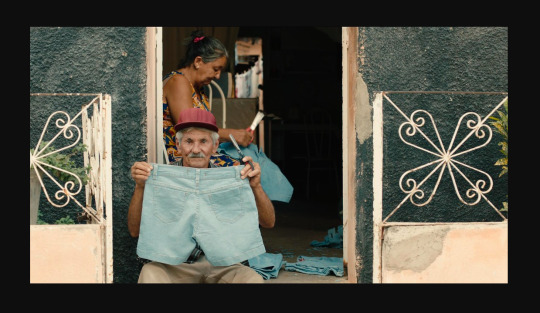
During the industrial era in France, lots of filmmakers showed the social ills of the working class. Bruno Muel's films in particular show how factories exploit workers. At the time, there were lots of similar documentaries, but today's post-industrial France is moving on to new themes. Even so, the working class is still struggling all over the world. Marcelo Gomes' 2019 documentary looks at the living conditions of the people of Toritama in Brazil. In this small, remote town, 20 million pairs of jeans are produced every year in old factories. The workers seem unaware of their situation, even though the conditions in which they work are pretty bad. They say they want freedom, and they want to be able to earn more or less according to their own will and ability. This documentary is all the more relevant because the village has changed a lot between the generation of the director's father and his own. There's no trace of the old village left. The wait for the carnival is a source of desire and motivation that gives meaning to this work and this search for money. It's tough to describe the film because it covers so much ground. I'll try to break it down thematically, looking at the most notable approaches that make this documentary a film with a social, personal and artistic purpose.

I'll focus on the idea of a social portrait of the inhabitants, both in terms of the city's organization and the pursuit of a cyclical temporal objective: the carnival.
youtube
Are we working to live or are we living to work? It's a tough question about the differences in perspective between the audience and the main characters. Marcelo Gomes shows us a dystopian city that's been caught in the grip of capitalism. The city is basically a factory, and people spend their entire lives 24/7 working. It's a society that's totally trapped by modern capitalism. It's incredible how much work is shown throughout the documentary. When Marcelo Gomes interviews people, they don't stop working to talk. The machines never stop, so people keep going and talk to the filmmaker at the same time. People's houses have been turned into jeans factories. The streets are covered in jeans, on the floor, on bags, on cars, and even on people's backs. They live and work from home, which is bad for their health. It's causing back problems, stress, and respiratory issues. They're putting their lives at risk at work. Movies are a great way to show what life can’t be like. It’s a dystopia for the audience and a reality for the people of Toritama. The mechanization of the jean industry has affected many people’s lives and has led to a loss of humanity. The first scenes of the film show how workers are always on the move at work. People produce from the comfort of their homes and from the streets of Toritama.
The people of Toritama are grateful for this job. The good humor makes this film less tragic. It is reminiscent of Charlie Chaplin's Modern Times and burlesque cinema. Comedy in difficult times. Cinema is used to show the notion of the impure. Like Marcelo Gomes, the viewer asks: why are people happy?
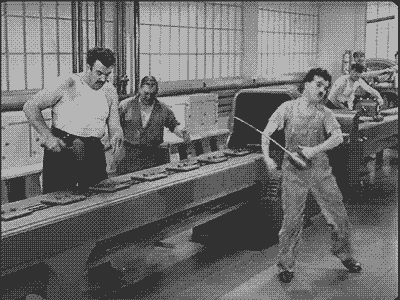
It's chance that creates such an impure documentary. It starts with childhood and the present, which is manipulated by a dominant system. Carnival is a symbol of hope. The cinema immerses us in an existentialist subject. The phrase "there are only 365 days left to wait for the carnival" shows us how these beings are organized. Like in Waiting for Godot, two characters wait for Godot. We don't know what Godot represents, but the characters wait for it. It's an absurd expectation, but it keeps the story going.
Written by Natalia Ceskary
0 notes
Text
Chair porn itself
to be absurdist in nature, its porn of chairs afterall.
Considering setting and the logistics of actually making this source medium - how would a lolcow make it? It is genuine and visceral, it is low quality and honest. Where would chairs have sex? How would someone get off from that?




Found two chairs: What I like about them is that they are replicates of eachother, they have the wooden aspect I'm looking for, and the white faux-leather wrap is sexy i think.


I'm trying to write a script so I can also make a storyboard / shot list for the actual video, but i'm struggling a lot in terms of how to write the chairs leading up to the sex. I read Waiting for Godot just for inspiration in absurdist theatre but my friends suggested me just to watch porn instead.
I also got to thinking how I would need to approach the chair porn itself. in the created fiction, its made by someone. Chairporn guy. It would be genuine and visceral, something actually of a fetish, where as now i am approaching it through an outside, analytical lens. I talked to tom about this and they said to think about chairporn guy. What parts of his psychological makeup would manifest itself into the chair porn he makes.
0 notes
Note
8 and/or 12 :3
hm most specific role. we dont usually rly go into specifics for roles aWAIT we have a janus who hasnt fronted in a billion years whos role was to make us shower and brush our teeth HEHWHAHAHA
biggest surprise.... hm. i think our two fictives from our literature class probably take that (jane from i cannot fucking remember, and dill from to kill a mockingbird). both fronted once and vanished into our brain forever. WAIT ALSO estragon from waiting for godot. he helped us with our drama performance that year (of his source material. we played his character LMAO) and hasnt been seen since. hope those three r doing alright 🫡
1 note
·
View note
Text
youtube
Just a quick update and half-write-up on Flax now that I've ported over the bulk of my flight model from Unity...
HOLY CRAP I LOVE THIS ENGINE! Part of the ease with which the code flows is skill and maturity with regards to writing code, sure, but it helps to have a toolset that's modern and encourages good practices as well! Between Dotnet 7.0 and a new version of PhysX, Flax meets Unity with a lot of comparable features and components. The existing parity is augmented further by a very fast and responsive editor that recompiles changes nearly instantly (while Unity will sit for a minute a lot of the time), meaning I can just iterate and iterate and iterate without spending half the time waiting to compile!
While there are still some quirks, like the editor camera behaving... differently than Unity's, the Animation Graphs crashing if you use a buggy node, and general "newness" of the engine that take some getting used to, the workflow is familiar and comfortable and not at all strange. Moving from Unity to Flax is far easier and simpler than trying to pick up Godot or Unreal. There's far more transferable knowledge between Unity and Flax than either of the other two big name engines.
Bless the devs for also making the engine open source, I love being able to recompile and rebuild it with native 64-bit coordinate support! It's not perfect - you still have to work around a 32-bit graphics pipeline and physics engine, but these are small little nibbles of problems compared to wrapping or rewriting all of Unity to achieve the same behavior, as I've done in the past. I can still transfer that knowledge and add some meaningful behavioral improvements to the engine as forked for CVW5!
I still have yet to get a handle on the graphics pipeline and really refining the rendering and animation flows for our needs on the CVW5 team. Fortunately, with how speedy and familiar Flax is, I don't anticipate that knowledge will come together quickly enough! The UI tools are excellent and easy to use, and the rest of the engine's tools are just as lovely.
Anyway, that's my thoughts on the matter of game engines. If you haven't heard of Flax before and are considering leaving Unity's ecosystem, I'd recommend giving it a try! More attention is bound to make it better, so I hope this helps some indecisive devs explore new and exciting engines in 2024!
Have a lovely evening and happy holidays!
#flax engine#indiedev#low poly#game development#game design#game dev blog#game dev stuff#flight simulator#Youtube
1 note
·
View note